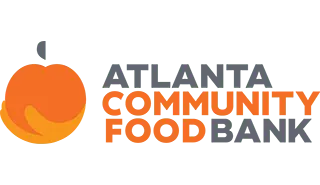Many Hall residents seek an oasis in food deserts
In Lula, a family living in a remote farmhouse might have to drive more than 10 miles to get to the nearest grocery store.
Meanwhile in Gainesville, families living half a mile from the nearest grocery store can’t afford the vehicle to get there.
These two factors — low income and limited access — are two major facets of what the United States Department of Agriculture calls “food deserts,” where limited access to supermarkets, grocery stores or other sources of healthy, affordable food make it harder for Americans to eat a balanced diet.
Pockets of the Gainesville-Hall County area fall into this category, and the symptoms have an effect on a large number of residents.
THE PROBLEM
According to 2010 census data, approximately 30 percent of people in Hall County were considered to have “low access” to grocery stores. That amounts to more than 51,000 people, according to Andrew Linker with Northeast Georgia Locally Grown.
Of that number, more than 17,700 people were struggling with both limited access and low income. The USDA and the Let’s Move! Initiative are focused on these populations, where a person’s environment affects their ability to eat well.
A preliminary measurement of food deserts is outlined in the USDA Food Access Research Atlas. “This is the USDA’s attempt to measure food access, and the way they’re doing it is by making a kind of standard approach,” Linker said. “That involves a few components, and one is being urban versus rural. Hall County has both.”
Hall County has large areas that fall into the basic definition of food deserts, including most of Gainesville and the central portion of the county. These large areas are especially striking compared to nearby Dawson, Lumpkin and White counties, which have none.
Linker said Gainesville is considered “urban,” based on the density of its population. So within the city, the agriculture department assumes people can carry groceries to and from a grocery store up to one mile.
Meanwhile, in rural Hall County, the department assumes people have vehicles to travel up to 10 miles.
“These definitions are pretty crude, because there are so many variables,” Linker said. “But the map is a good start.”
Kay Blackstock, executive director of Georgia Mountain Food Bank, agreed. She said transportation is a major issue even in rural parts of the county.
“Because there’s no public transportation, and if people do have a car themselves, they have limited dollars to spend on gas to travel to the nearest store,” she said. “In that situation, you get into buying food from a convenience store way out, or try to get a ride to a supermarket for more variety of fresh fruits and vegetables and those choices, really.”
Blackstock said she sees the same transportation issues within the city as well. “So you have to ask yourself, ‘What’s happening there and what’s the answer there?’” she said. Linker said he thinks much of the problem is in the home. Gainesville, in particular, with its ever-growing supply of fast-food options, doesn’t provide children and families the opportunity to eat a healthy meal at home.
“We’ve lost the traditional measures and habits of sitting down, having a meal together and cooking our food,” Linker said. “It’s a complicated issue when you involve income and all these other factors, but I see it in the kids. I see it in their face when I show them a new vegetable.”
Blackstock said dialogue about food and dietary needs is especially common in the summer, because children aren’t getting at least one hot meal at school.
But she said, even during the school year, parents and families are struggling to feed themselves. “We have to sit down and ask ourselves, ‘OK. Thank goodness the children are getting fed, but what about the adults and the grandparents?’” she said. “If they don’t have access, they suffer health consequences, which affects the whole family.”
(Below: Information from the U.S. Department of Agriculture Economic Research Service shows areas in red in Hall County where a significant number of households without vehicles live more than a half mile from the supermarket. These areas are considered low income with limited access in terms of the supermarket indicator.)
THE SOLUTION
Fair Street International Baccalaureate World School’s cafeteria roared with the sound of hundreds of children eating pizza and fresh fruit Thursday, despite the fact that the school year was over. In both Gainesville and Hall County, school districts participate in Seamless Summer Option, which provides two free, hot meals a day to children under 18 and at affordable prices to adults. Julio Cabanas, assistant principal at Fair Street, said he can relate to the children and families in Gainesville.
“I came from a house where my parents, neither one of them had college degrees,” said Cabanas, who grew up in Miami and started in Gainesville schools this month. “I left home for school and they were already gone. I came home and they were still working.”
Cabanas said Fair Street alone feeds between 500 and 600 children Monday through Friday. He said they hope more families in the community will feel welcome to come eat as well.
But Linker said solving the county’s food insecurity issues is bigger than that. “We want a cure-all,” he said. “We want a methodical way we can solve food access. … But I don’t see it like that at all.”
Linker said it has to be an approach through multiple areas, from community initiatives, education and media to city planning and zoning.
He said communities should also take it upon themselves to define their food deserts. “In Hall County, it’s amazing, I’ve seen so many small steps in the right direction,” he said. “And I think those small, inexpensive ways to approach this are the best way.”
Blackstock agreed, calling education and awareness “essential.”
“You can look at this map and think, ‘How can this be?’” she said. “I just don’t think folks realize.” Blackstock said her co-worker. Lydia Johnson with the food bank. is in the middle of a massive mapping project through funding from United Way Community Investment.
The mapping project will look at all food options in the county, beyond grocery stores and food bank partners.
“They have surveyed all of the churches to identify other people who are feeding who are not partners of the food bank,” she said. “We wanted the whole picture, not just what we’re doing or what our partner agencies are doing. We wanted to know who else is feeding people out there and what areas, according to the USDA map, are low-income and low-access.”
A solution they’ve developed, she said, is targeted mobile pantries in those areas. But they also hope to identify community partners that could adopt the needs of the areas long-term.
Blackstock said they hope to use the maps to target areas for 12 months, after which they might better “know which direction to point the ship.”
“I’m learning a lot through this,” she said. “I think we all are.”
Kristen Oliver
The Gainesville Times


















